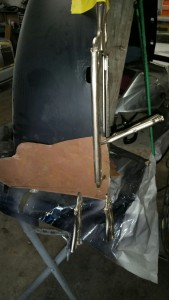Recently I rebuilt the carburetor on this 1936 Auburn 852 Supercharged Phaeton, the carb is a Stromberg EX-32 downdraft. It is directly mounted to the Schwitzer Cummins supercharger that aspirates the 280 cid flathead eight. The rebuild was very simple as the float did not have to be adjusted, after the rebuild the car ran perfectly smooth. In addition to the carburetor rebuild, a new wiring harness was also installed. The harness is in multiple pieces for the engine, lights, etc. The installation of the harness was also very simple, and the car ran stronger than ever.






